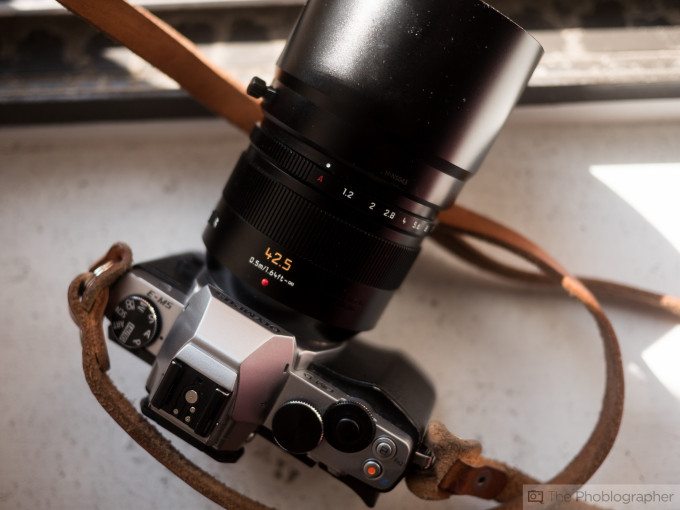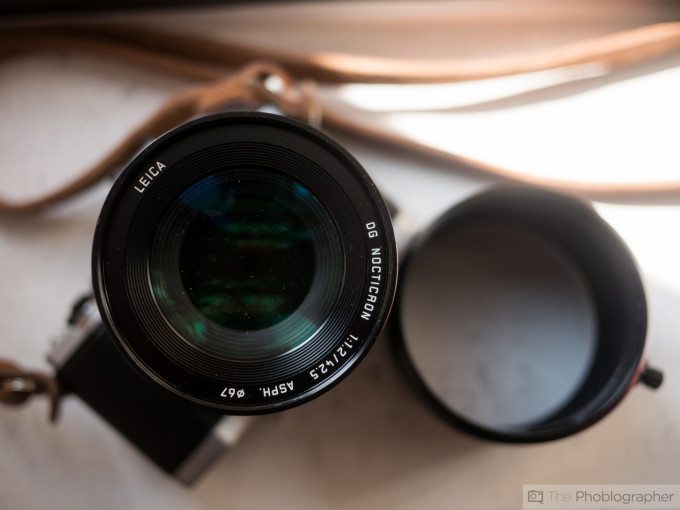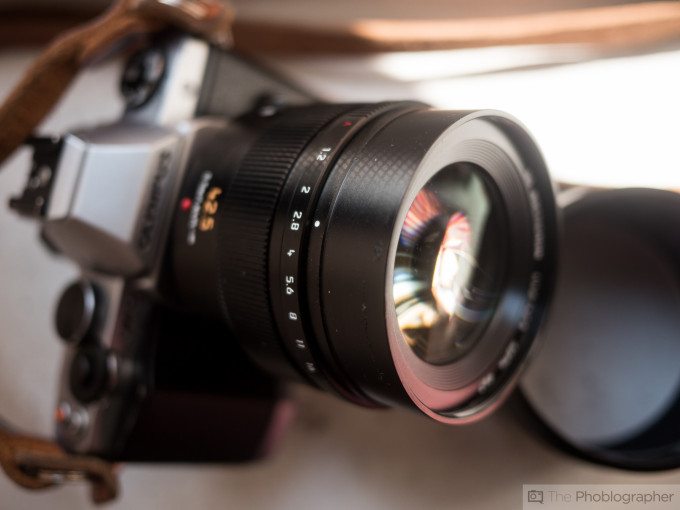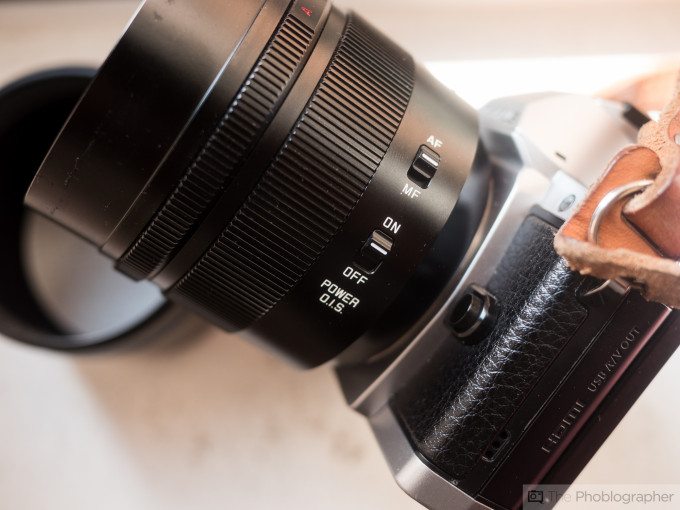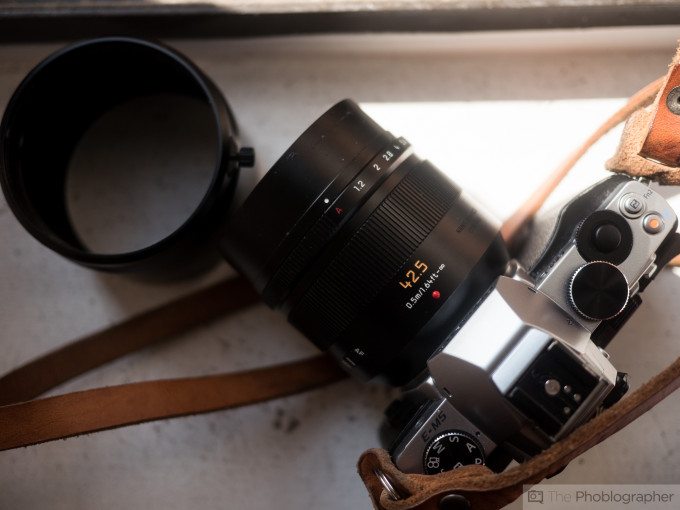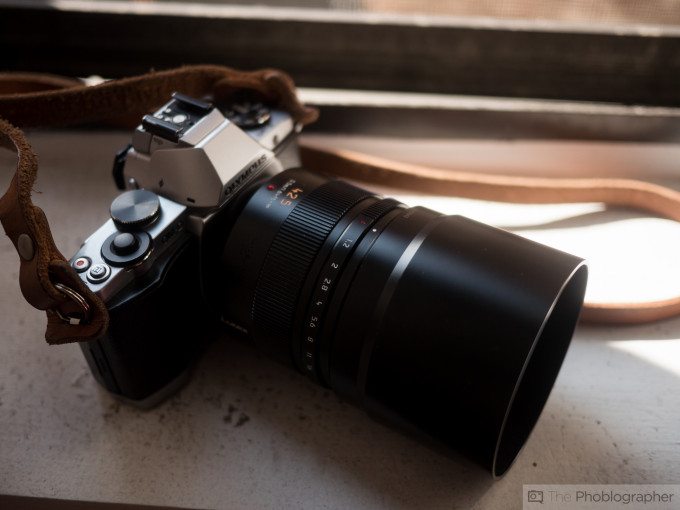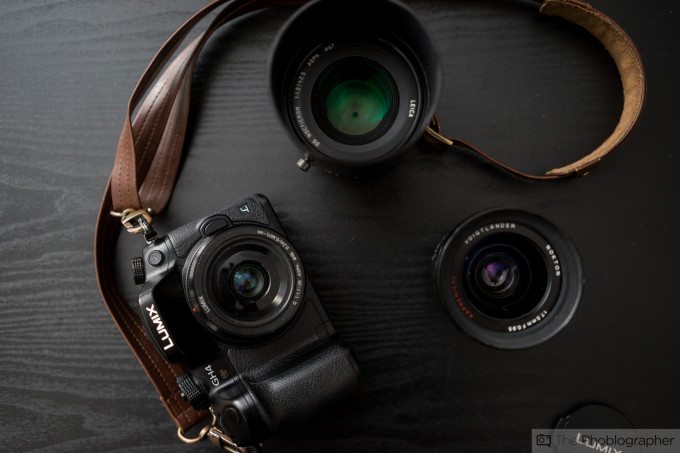Behold: the Panasonic 42.5mm f1.2. Yes, an f1.2 autofocusing lens is here for the Micro Four Thirds system. Customers have ben dreaming about a lens like this for many years and as the system has grown up, so too have its optics offerings.
We’re very much inclined to say that this portrait lens is something that you’ll never want to let go of. In collaboration with Leica, Panasonic has created something that is sharp, delivers great colors with skin tones, and isn’t too heavy.
And if anything is holding you back, it will really only be the price.
Pros and Cons
Pros
– Super sharp wide open. In fact, it’s the sharpest that we’ve ever tested for the system
– Beautiful build quality
– Nice aperture ring
– Fast to focus
Cons
– Aperture ring control only works with Panasonic cameras
– Expensive
– Not the smartest focusing with Olympus cameras unless a point is chosen beforehand.
Gear Used
We tested the 42.5mm f1.2 with the Olympus OMD EM5 and the Panasonic GH4 along with the LumoPro LP-180 flash and PocketWizard transceivers,
Tech Specs
Taken from the B&H Photo listing of the lens
Ergonomics
From the look of this lens, we can tell that there had to be some sort of collaboration with Leica–and indeed there was. The badge on the front of the lens clearly states that Leica had a part in its design. At the front of the lens, you’ll spot a 67mm filter thread. Also standard with the lens is the lens hood–which is really quite big. In fact, it’s nearly as large as the lens itself.
The 42.5mm f1.2 lens is mostly comprised of metal in its build. This metal exterior makes it looks and feel like a Leica M lens–which matches fine with a mirrorless camera setup.
On the side of the lens, you can see switches that help with the controls. Most importantly, you’ll want to pay attention to the stabilization and the manual focus/autofocus switch. Keep these in mind accordingly based on the camera that you’re working with and if you’re using a tripod.
Along the body of the lens, you’ll also spy other controls like the aperture ring and the focusing ring. As is standard in Leica design, the aperture ring is towards the front of the lens while the focusing is at the back. If anything though, we wish that the focusing ring had some sort of tab to focus just like Leica’s lenses do.
Build Quality
This has to be by far the most solid feeling Micro Four Thirds lens that we’ve ever handled. It feels every bit as solid and well constructed as a Leica lens would–and indeed it is co-branded with a Leica badge. However, it isn’t weather sealed so we need to keep that in mind when shooting.
If anything, it feels very much like a modern Zeiss DSLR lens crossed with something Leica may create for the M series.
As we stated earlier, the lens also has a massive metal hood.
Ease of Use
The Micro Four Thirds world has both Panasonic and Olympus. And one of the first things that you need to keep in mind is that Panasonic puts the stabilization in their lenses while Olympus puts it on the sensor. So when using this lens, you should keep in mind the switches on the side. Otherwise, this lens works like many other autofocus lenses with the system: you’ll need to just mount it to the camera and shoot in order to get great photos.
Granted, this lens also has a manual focusing switch–so you should be cognizant of that.
Whether you’re an Olympus or Panasonic user, we believe that if you’re going for a lens like this then you’ll obviously be using it primarily for portraits. If that’s the case, then we think that you won’t have anything to worry about. However, we recommend that your camera’s autofocusing priorities be set to face and eye recognition.
Autofocus

The lens focuses extremely quickly–which is what we were quite surprised by when we got it in for review. Many lenses this heavy and large can’t focus as quickly, but somehow or another the 42.5mm f1.2 lens can keep up with many other options in the Micro Four Thirds line. Though we wouldn’t recommend it for street photography, the speed is more than good enough for portraits or mostly stagnant subjects.
On the Panasonic cameras, not only was the focusing a tad faster, but it also seemed smarter based on the composition of the scene. But when mounted to Olympus Micro Four Thirds cameras, it also focused quickly though not as smart based on the composition of the scene.
Again though, selecting a focusing point can fix this problem for the most part though there were two instances where we found ourselves saying, “Damned autofocus” during the review period.
Image Quality
EXIF data on all images is in tact. Again, we recommend clicking on the images where you’ll find the EXIF info in the photo’s URL.
If you’re in the market for an extremely sharp Micro Four Thirds lens of some sort, then you’re reading the right review. Panasonic’s 42.5mm f1.2 lens is–dare we say it–the sharpest lens for the system that we’ve ever tested. Panasonic put a lot of work into it, and you’re surely paying for it. Not only is this lens very sharp, but it focuses quickly, can have some very beautiful bokeh, great color rendition when working with skin tones and overall can present a great look for your subject.
Best of all, because this lens is designed for Micro Four Thirds, you’ll really almost never want to stop it down unless you really need to. When it comes to depth of field equivalency, the 42.5mm f1.2 is comparable to an f2.4 depth of field on a full frame camera. In many cases, you indeed may not want to stop it down.
During our tests, we still found that even though its field of view is effectively an 85mm equivalent, it still obviously acts like a 42.5mm lens. With that said, you’ll want to be aware of this when it comes to working with subjects that have double chins, etc.
Sharpness

This has to be the sharpest lens for the Micro Four Thirds system that we’ve tested as stated above. When we first tested it out at CES 2014, we added a flash to the scene which indeed gave us even sharper results than when we don’t have a flash. However, if you’re purchasing a lens that can be shot this wide open, it’s a bit of a shame that you’re using a flash.
Still though, that is the only way that you’ll get the purest and best sharpness from the lens. Micro Four Thirds portrait photographers will want to know this since the sharpness and overall look that this lens offers is why you may purchase it fo begin with.
Bokeh
When it comes to bokeh, then you’ll want to know that this lens also has the best bokeh of any Micro Four Thirds lens that we’ve tested. The bokeh from this lens can’t be described as hazy but indeed very creamy. In fact, we’re smitten with it and the way that it seems to surround the subject when shot wide open.
Again, because of the depth of field equivalent, we almost see no reason to stop it down.
Color Rendition
Straight out of the camera color rendition is just like anything else that you would expect from Panasonic–muted. Granted, this works splendidly for skin tones especially for folks who tend to have red undertones to their skin.
If anything, we just need to do some more selective saturation in post-production.
Color Fringing
Throughout our tests with the production version of the lens, we couldn’t find any color fringing except when a flash was added and shooting at f1.2. But even that was very easily removed in Adobe Lightroom 5.
Extra Image Samples

Conclusions
Likes
– Great build quality
– Super shallow depth of field with this sensor
– Super sharp
– Great portrait optic; hands down the best in the system
Dislikes
– That price…
– We really wish that Panasonic and Olympus products would play nicer together.
Was there ever any doubt?
Panasonic’s 42.5mm f1.2 is a lens that you can have almost no complaints about on the right system. It’s sharp, focuses quickly, has great color for portraits, features a robust build quality, feels great in the hand, and can help you deliver better images when combined with the right skills in lighting and composition.
Indeed, Panasonic has created the perfect portrait optic for the system–and it’s about time that they did.
We award Panasonic’s 42.5mm f1.2 lens a perfect five out of five stars, and assign it our coveted Editor’s Choice award. Want one? Head over to Amazon where you can score yours for $1,599.99.
Recommended Cameras and Accessories
– Panasonic GH4: The flagship Panasonic camera will focus the quickest and smartest with this lens. It’s very much work checking out our full review.
– Olympus OMD EM1: Olympus’s flagship camera will focus with this lens faster than with the EM5, but it will still have a couple of contrast detection issues. Check out our full review.


